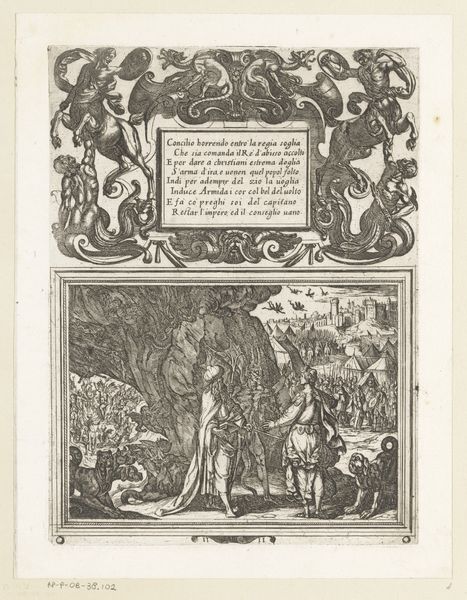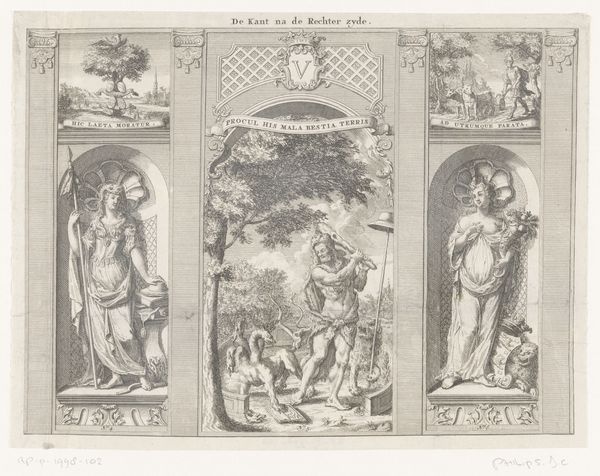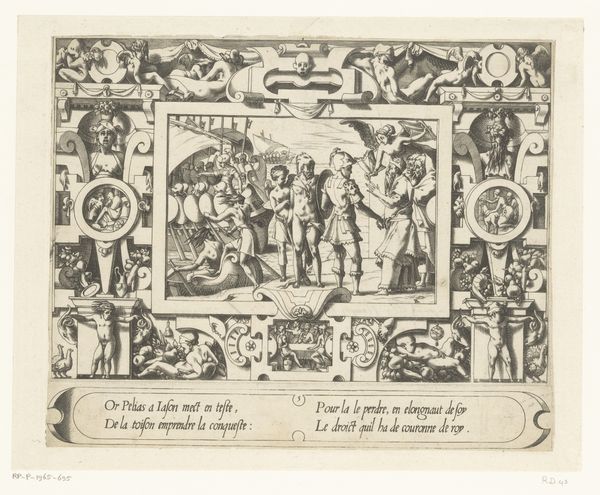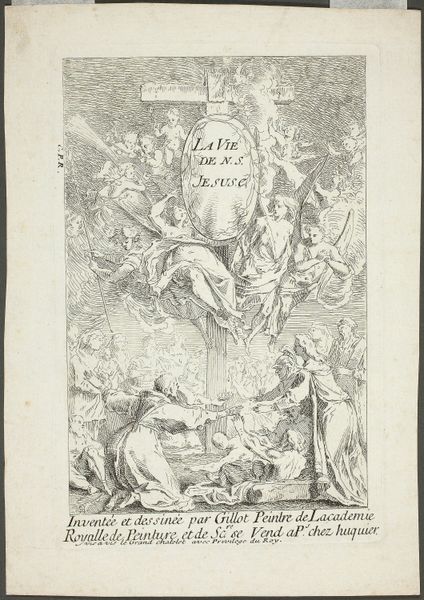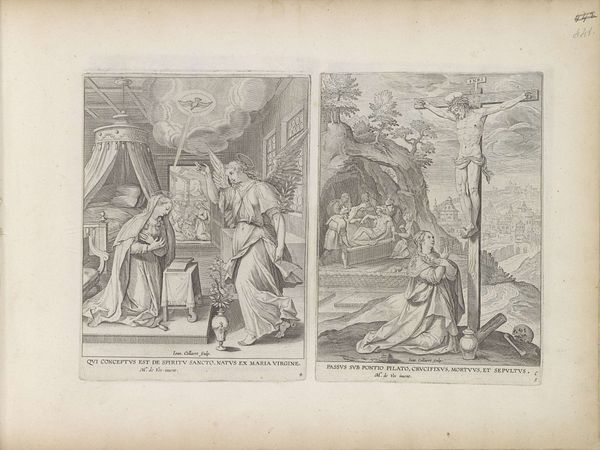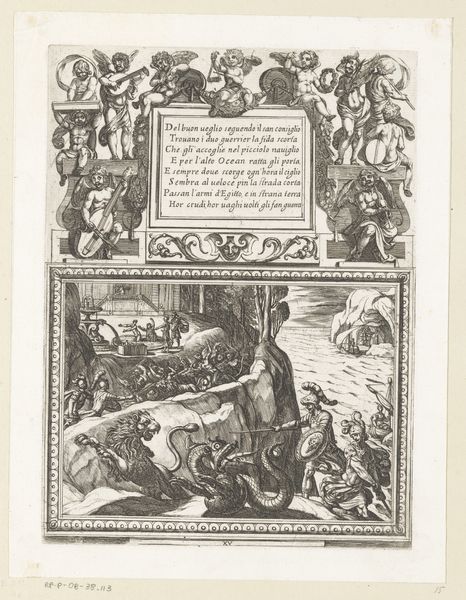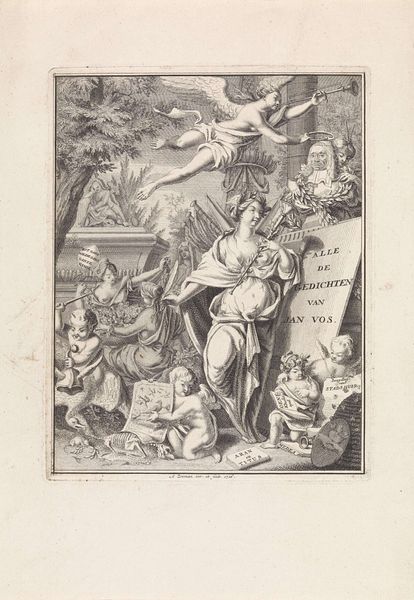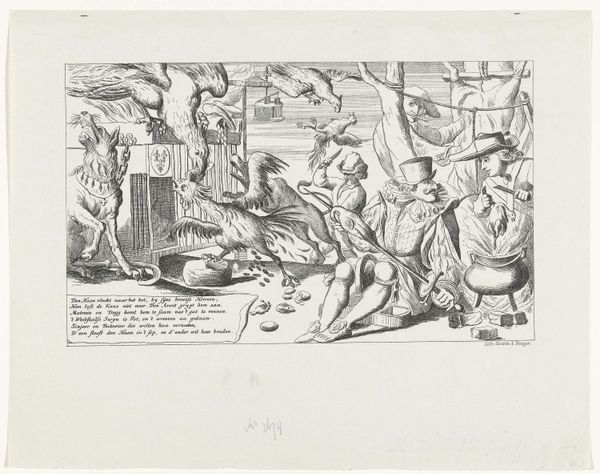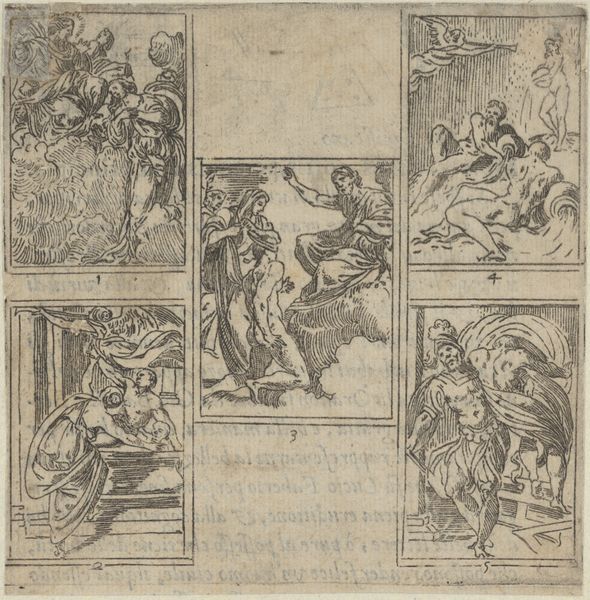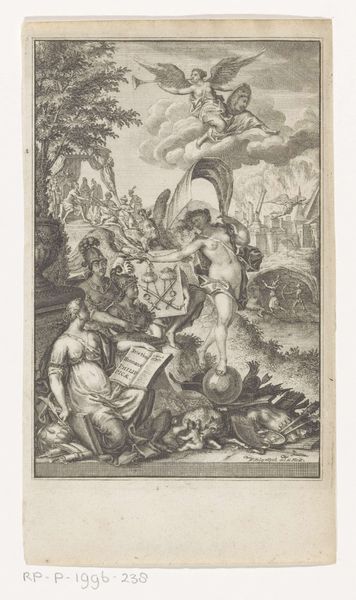
Titelpagina met het portret van Ovidius op een medaillon / Ovidius vergezeld door twee muzen 1713
0:00
0:00
bernardpicart
Rijksmuseum
print, engraving
#
portrait
#
allegory
#
baroque
# print
#
old engraving style
#
figuration
#
line
#
history-painting
#
engraving
Dimensions: height 124 mm, width 148 mm
Copyright: Rijks Museum: Open Domain
Editor: This is "Titelpagina met het portret van Ovidius op een medaillon / Ovidius vergezeld door twee muzen," a 1713 engraving by Bernard Picart, housed at the Rijksmuseum. The details are incredible; it feels very symbolic and allegorical. What historical context shapes your reading of this print? Curator: Looking at Picart's title page, I see it as a complex commentary on the role of the artist in society and the enduring power of classical narratives. The Ovid medallion, framed by laurel, suggests authority. Yet, considering the historical period, the early 18th century, how might the classical allusions also serve as a commentary, perhaps even a critique, on contemporary social and political structures? Editor: A critique? I hadn't thought of it that way. Curator: The artist is intentionally referencing antiquity and situating themselves, or rather Ovid, within this framework. The muses offer another point to examine. What does their presence tell us? Are they merely inspirational figures or do they symbolize something more within the socio-political landscape of art production at that time? Editor: Perhaps they highlight the importance of the artist's inspiration, elevating the artist. So, Picart uses these symbols to speak to the artist's role. I find it helpful to connect those classical references to the societal status of artists. Curator: Exactly! And this brings up the key question: in what ways can art engage with issues of power, identity, and resistance, even when seemingly confined to historical or mythological subjects? What did you notice about the putto figure on top of the globe? Editor: Well it seemed odd at first, but perhaps it symbolizes Ovid's far reaching impact across geographical and cultural bounds. It’s something that I wouldn’t have thought of originally. Curator: And there, my friend, is where art history intersects with our present. The image serves as a bridge connecting past and present sociopolitical statements and perspectives.
Comments
No comments
Be the first to comment and join the conversation on the ultimate creative platform.
